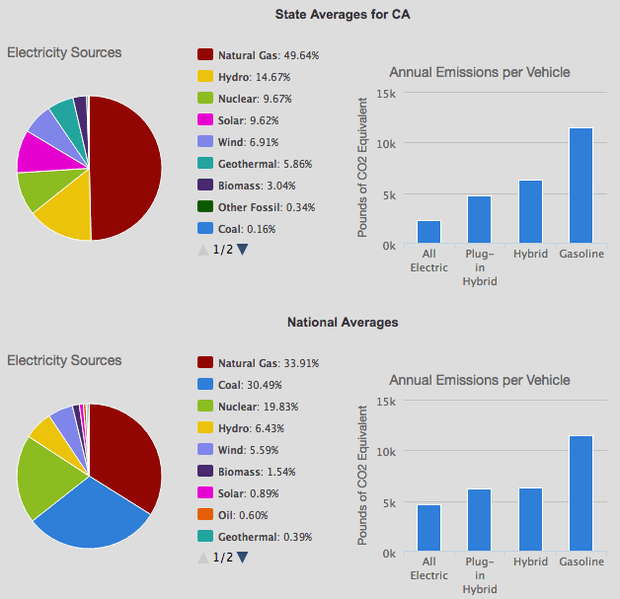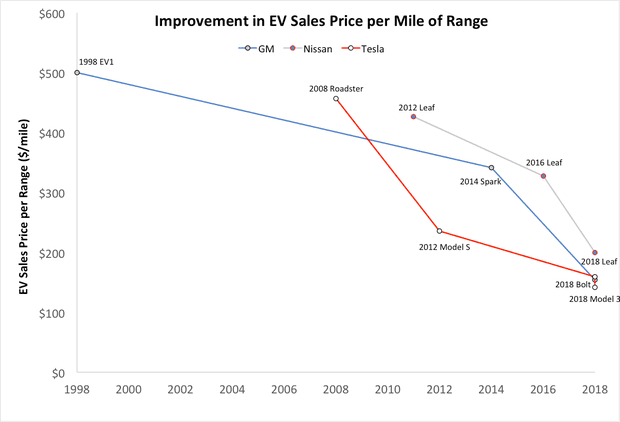
In order to meet its share of the carbon pollution cuts needed to achieve the 2°C Paris international climate target, America’s policies are rated as “critically insufficient” by the Climate Action Tracker. The Trump Administration has taken every possible step to undo the Obama Administration’s climate policies, including announcing that America will be the only world country to withdraw from the Paris agreement, and trying to repeal the Clean Power Plan.
In 2020, the next American president will have to make up the lost ground and come up with a plan to rapidly accelerate the country’s transition away from fossil fuels. Currently, transportation and power generation each account for about 30% of US greenhouse gas emissions, so those sectors represent the prime targets for pollution cuts.
American power sector carbon emissions had exceeded those from transportation from 1979 until 2016. But because coal power plants have rapidly been replaced by natural gas and renewables, US power sector emissions have fallen rapidly since 2007, and are now below 1989 levels. US carbon pollution from transportation, on the other hand, has been on the rise since 2012. It remains higher than in 2000, nearly 20% higher than 1989 levels, and has surpassed power sector emissions.

US Energy Information Administration data on carbon pollution from the transportation and power sectors since 1973 (2017 estimated from the first 9 months of data) Illustration: Dana Nuccitelli
The transportation sector thus represents a prime target for cutting American carbon pollution, with light-duty (passenger) vehicles accounting for 60% of those emissions and medium- and heavy-duty trucks accounting for a further 23%. These emissions can be significantly reduced by transitioning from the internal combustion engine to electric vehicles (EVs).
Comparing carbon pollution between gasoline- and diesel-powered cars to those of electric vehicles can be tricky, because it depends on the source of the electricity generation, which varies from place to place. However, based on the average US power grid mix, the Department of Energy estimates that EV carbon pollution is 60% lower than that of gasoline-powered cars. In a clean energy state like California, it’s 80% lower. And even in a state like Wyoming, which gets 96% of its electricity from coal, EV carbon emissions are still 17% lower than gasoline-powered cars (although they’re 50% higher than hybrids).

Emissions for different types of passenger vehicles based on electricity sources in California (top) and the US national average (bottom) Illustration: US Department of Energy Alternative Fuels Data Center
Moreover, EV carbon emissions will only decline as clean energy continues to expand due to its aforementioned rapidly-falling costs and widespread adoption. At some point, the US will inevitably implement climate legislation that includes a price on carbon pollution, which will accelerate clean energy deployment faster yet.
Cost and battery range have been the two barriers to widespread EV adoption. However, both have rapidly improved over the past several years. In 1996, the GM EV1 was the first modern mass-produced EV. It had a range of approximately 100 miles (160 km) per charge at an estimated price of $34,000 ($50,000 in 2016 dollars), which amounts to $500 per mile of range. Tesla produced its first car – the Roadster – starting in 2008, with a range of 244 miles (393 km) at a price of around $100,000 ($410 per mile). Nissan first sold its electric Leaf in 2011 for $33,600 with an 84-mile (135 km) range ($400 per mile).
All three companies have since dramatically improved their EV prices per mile of range. The 2018 Nissan Leaf sells for $30,000 with a 150-mile (240 km) range ($200 per mile). The Tesla Model 3 will sell for $35,000 with a 220-mile (354 km) range or $44,000 with a 310-mile (500 km) range ($140–160 per mile). The Chevy Bolt sells for $36,620 with a 238-mile (383 km) range ($154 per mile).

Sales price per mile of range for key EVs introduced by GM, Tesla, and Nissan. Illustration: Dana Nuccitelli
The price per mile of range has fallen by about 60% in less than a decade, excluding tax credits (which survived the recent tax bill) and additional state incentives that make EVs more affordable to consumers. Crucially, with the introduction of the Chevy Bolt and Tesla Model 3, ranges of reasonably affordable EVs have more than doubled over the past few years. These trends will continue – carmakers have invested $90 billion in batteries and EVs, and most of the major auto companies plan to roll out numerous new EV and hybrid models over the next few years.
Posted by dana1981 on Monday, 22 January, 2018
 |
The Skeptical Science website by Skeptical Science is licensed under a Creative Commons Attribution 3.0 Unported License. |